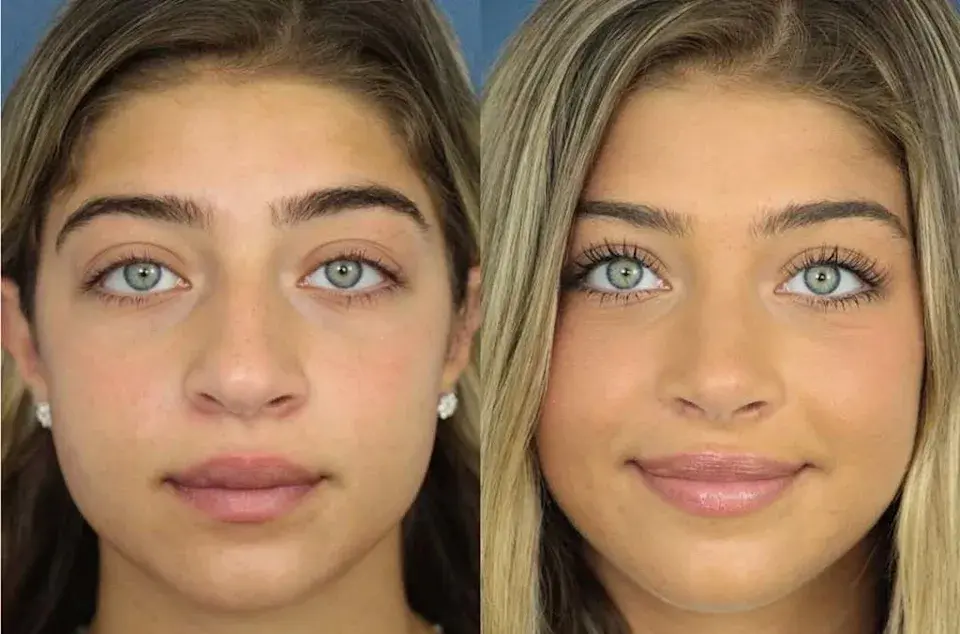The interest surrounding celebrity transformations is not new, but the conversation becomes more personal when the celebrity openly discusses it. This is exactly what happened with Gia Giudice, well-known from The Real Housewives of New Jersey. Searches like “did Gia Giudice get a nose job” and “Gia Giudice before and after nose job” continue to trend as fans compare photos and revisit her statement regarding the procedure.
 In this article, we look at how the transformation has been perceived, what before and after comparisons typically highlight, and the wider conversation about confidence, body image, and choice.
In this article, we look at how the transformation has been perceived, what before and after comparisons typically highlight, and the wider conversation about confidence, body image, and choice.
Did Gia Giudice Have a Nose Job?
Yes — and She Spoke About It
Unlike many public figures who avoid the topic, the question “did Gia Giudice have a nose job” has a clear answer: yes. Gia publicly confirmed that she underwent a rhinoplasty procedure when she was a teenager. She explained that the decision was personal and based on her own desire to feel more confident, not because of outside pressure.
This openness played a significant role in shaping how the public responded — many praised her honesty.

Gia Giudice Before and After Nose Job: What People Notice
Understanding the Differences
When people look up “gia giudice before and after nose job” or “gia giudice nose job before and after”, they typically examine:
- Bridge shape: The nasal bridge appears more refined and streamlined.
- Tip alignment: The tip looks slightly lifted and more defined.
- Facial balance: Her nose now complements her jawline and eyes more harmoniously.
- Symmetry: Subtle changes in angle and contour can enhance overall facial symmetry.
These adjustments are common goals in rhinoplasty, aimed at maintaining natural expression while refining proportions.
 Why the Public Reaction Mattered
Why the Public Reaction Mattered
Support, Criticism, and Larger Discussions
Public reactions to cosmetic procedures can be strong, especially for young celebrities. However, Gia’s confirmation helped shift the narrative:
Supporters said:
- Everyone has the right to feel confident in their appearance.
- Her transparency helps reduce stigma around cosmetic procedures.
- The result looks natural and balanced.
Critics argued:
- Influencers may shape beauty standards for younger audiences.
- The pressure to look perfect is stronger today, especially on social media.
Gia’s case became part of a broader cultural discussion about self-image, empowerment, and personal choice.
The Significance of Her Openness
A Shift Toward Honesty in Celebrity Beauty Culture
Many celebrities undergo cosmetic enhancements but deny or deflect when questioned. Gia’s directness set her apart. Instead of fueling speculation, she acknowledged the procedure publicly — which is likely why searches such as “did Gia Giudice get a nose job” continue to appear in respectful and informational contexts rather than in rumor-based ones.
Her transparency helped normalize conversations about cosmetic procedures, particularly for young women navigating confidence and self expression.
What to Consider When Looking at Before & After Photos
Understanding the Context
When evaluating any before and after transformation, keep in mind:
- Lighting and makeup can strongly influence appearance.
- Natural facial maturation (especially during late teens) changes structure.
- Cosmetic results take months to finalize, meaning early photos may not show the final look.
- Personal confidence can change expression, influencing how someone presents.
Not all changes are surgical — but in this case, Gia confirmed hers.
The story surrounding the Gia Giudice nose job is less about speculation and more about self-confidence and transparency. People continue to search for “gia giudice nose job before and after” because the transformation is widely considered tasteful and natural, aligning well with her facial features.
Her openness shifted the tone of the conversation—from gossip to understanding—and encouraged many to think about beauty decisions as personal choices rather than public debates.
Whether someone chooses to undergo a cosmetic procedure or not, Gia’s approach reminds us that the most important factor is how a person feels about themselves.


